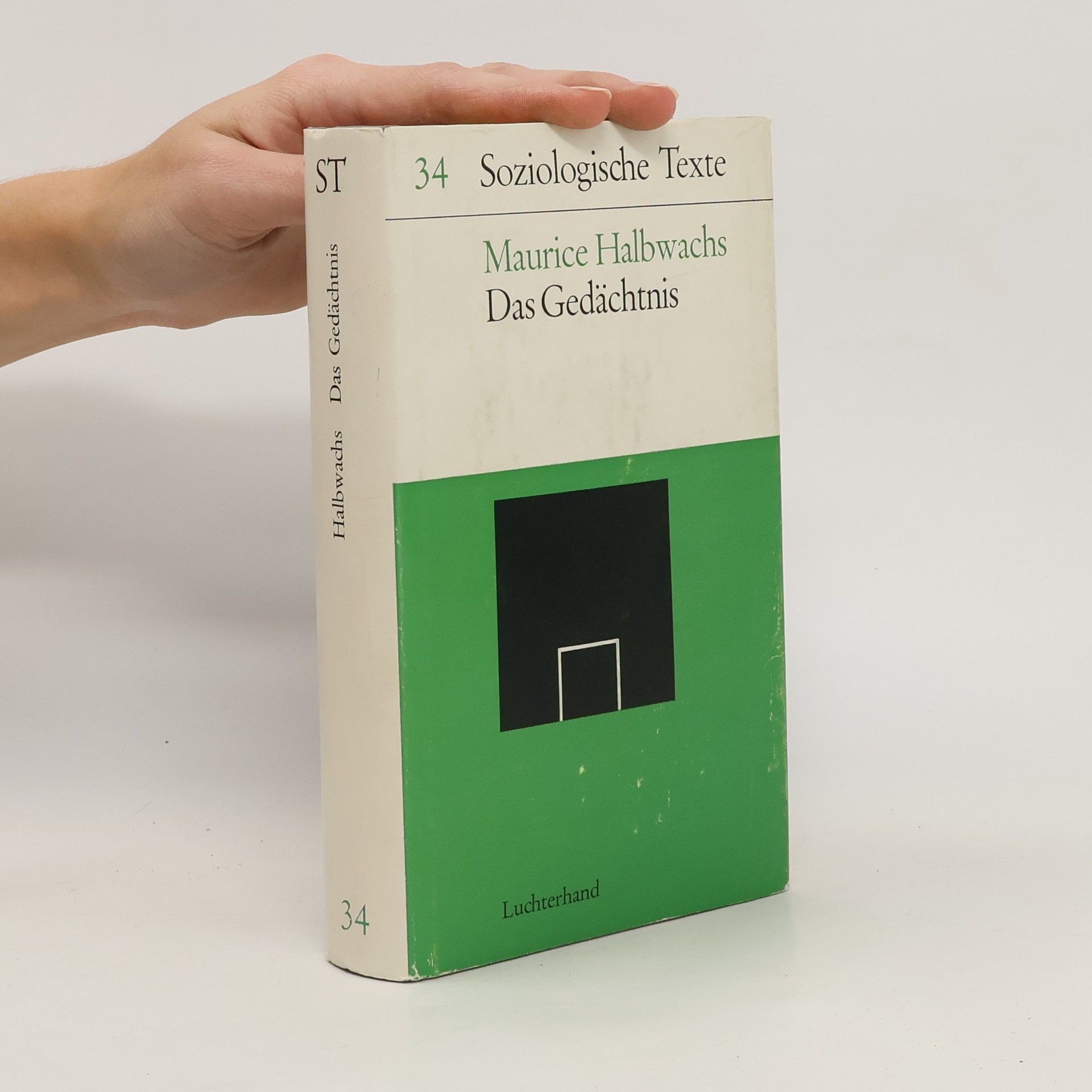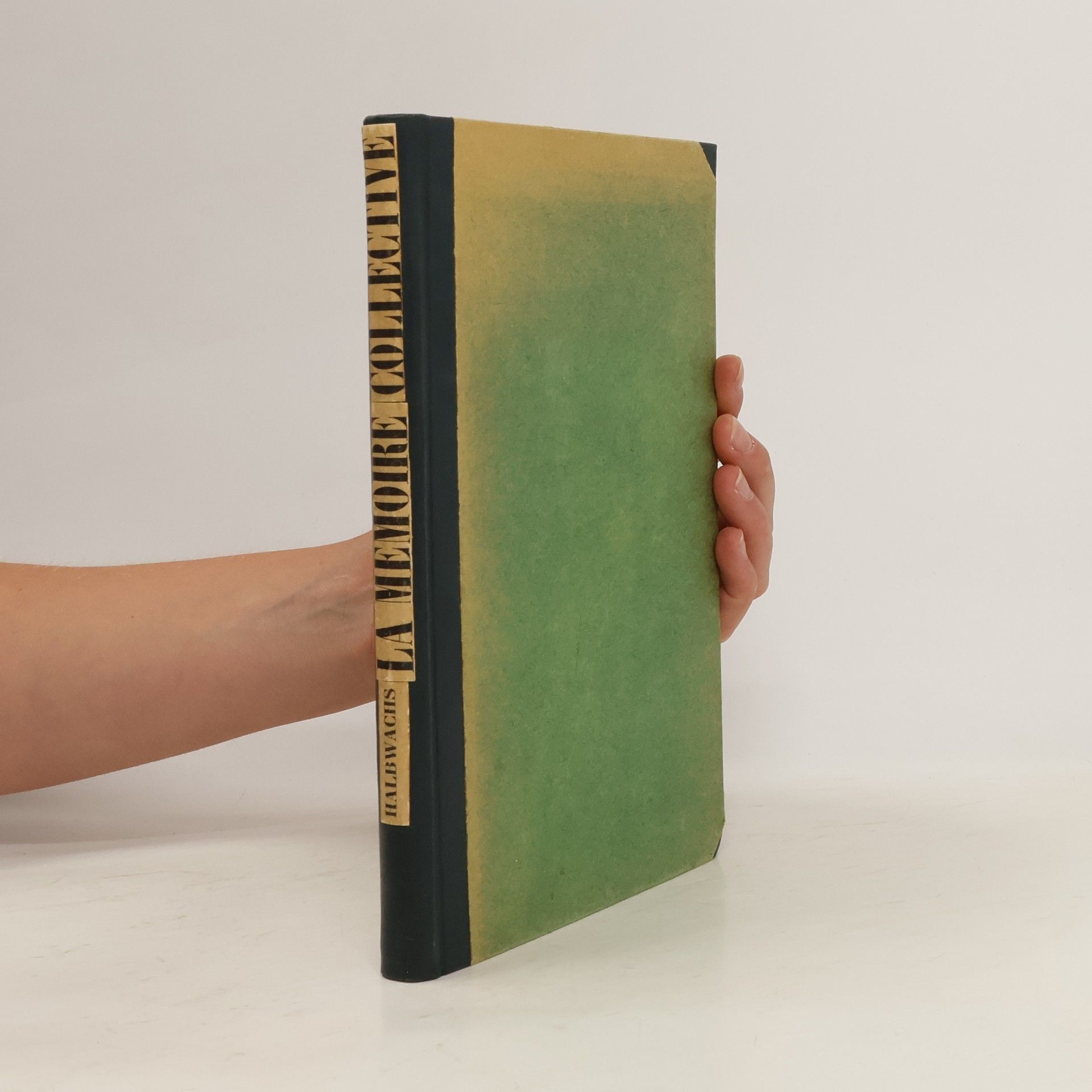Memoire Collective (La)
- 304pagine
- 11 ore di lettura







How do we use our mental images of the present to reconstruct our past? Maurice Halbwachs (1877-1945) addressed this question for the first time in his work on collective memory, which established him as a major figure in the history of sociology. This volume, the first comprehensive English-language translation of Halbwach's writings on the social construction of memory, fills a major gap in the literature on the sociology of knowledge.Halbwachs' primary thesis is that human memory can only function within a collective context. Collective memory, Halbwachs asserts, is always selective; various groups of people have different collective memories, which in turn give rise to different modes of behavior. Halbwachs shows, for example, how pilgrims to the Holy Land over the centuries evoked very different images of the events of Jesus' life; how wealthy old families in France have a memory of the past that diverges sharply from that of the nouveaux riches; and how working class construction of reality differ from those of their middle-class counterparts.With a detailed introduction by Lewis A. Coser, this translation will be an indispensable source for new research in historical sociology and cultural memory.Lewis A. Coser is Distinguished Professor of Sociology Emeritus at the State University of New York and Adjunct Professor of Sociology at Boston College.
This work has been selected by scholars as being culturally important and is part of the knowledge base of civilization as we know it. This work is in the public domain in the United States of America, and possibly other nations. Within the United States, you may freely copy and distribute this work, as no entity (individual or corporate) has a copyright on the body of the work. Scholars believe, and we concur, that this work is important enough to be preserved, reproduced, and made generally available to the public. To ensure a quality reading experience, this work has been proofread and republished using a format that seamlessly blends the original graphical elements with text in an easy-to-read typeface. We appreciate your support of the preservation process, and thank you for being an important part of keeping this knowledge alive and relevant.
In seinen Schriften zur Theorie sozialer Klassen entwickelt Halbwachs, zunächst in AuseinanderSetzung mit den Auffassungen der deutschen Nationalökonomie, dann im Verlauf seiner Untersuchungen zur Arbeiterklasse, gegen jeden „Realismus“ im Klassendenken eine Vorstellung, die im Verhältnis von „Berufsschicksal“ und „Lebensweise“ ein Maß der inneren und äußeren Aneignung der herrschenden Kultur, der Teilhabe an den gesellschaftlichen Gütern zum Ausdruck kommen sieht. Es sind diese sozial verfügten, sozial wahrgenommenen und sozial bewerteten Lebensweisen, an deren Grenzen sich die „Klassen“ scheiden. Das Gesamtwerk Maurice Halbwachs in der édition discours umfasst 7 Bände (ISBN 3-89669-990-3). Die Ausgabe wird im Herbst 2003 mit Erscheinen des Materialbandes abgeschlossen.
Auf anschauliche Weise verdichtet Maurice Halbwachs in diesem Buch seine früheren Untersuchungen über den engen Zusammenhang von Weltbezug und Lebensweise, Kulturaneignung und Klassengrenzen. Seine „Psychologie“ beschäftigt sich immer wieder mit den großen Ordnungen und Mächten des sozialen Lebens, Familie und Religion, Staat und Nation, die alle im Menschen ihre Spuren hinterlassen. Am tiefsten prägen den Menschen aber „soziale Klassen“. Fernab der alten bäuerlichen Kultur zeigen sich in der städtischen Zivilisation mit ihren Klassen die konkreten Zusammenhänge von „Lebensstellung“ und „Lebensschicksal“, in denen eine ganze Welt kollektiver Bedürfnisse und Antriebe, Gefühle und Vorstellungen ihren eigentümlichen Ausdruck findet. Das Gesamtwerk Maurice Halbwachs in der édition discours umfasst 7 Bände (ISBN 3-89669-990-3). Die Ausgabe wird im Herbst 2003 mit Erscheinen des Materialbandes abgeschlossen.